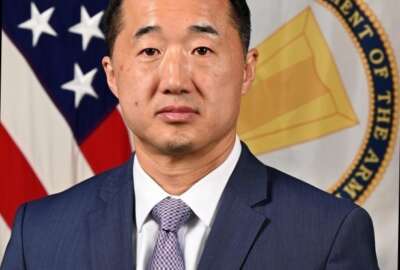How to inoculate your agency’s acquisitions against protests
Protests of agency solicitations or contract awards draw protests about two thousand times every year. It's no fun for either side. But there are things the...
Protests of agency solicitations or contract awards draw protests about two thousand times every year. It’s no fun for either side. But there are things the government can do in crafting an acquisition to lower the chances of a protest. At the recent National Contract Management Association World Congress in Nashville, Federal Drive with Tom Temin got the lowdown from the senior procurement analyst at the Army’s Procurement Support Directorate, Michelle Miller.
Interview Transcript:
Michelle Miller There is no such thing as protest proof, so it is on best practices to avoid big protests. There are things you can do to attempt to avoid, but nothing is protest proof.
Tom Temin Got it. Well, with that caveat, let’s talk about scope here, because roughly there’s about 2100 protests every year out of hundreds of thousands of contract actions. So it’s a small number, but I guess it has an inordinate effect on things, doesn’t it?
Michelle Miller Well, it has a huge effect If you happen to be the one who gets the protest. It can literally take over all of a contracting officer’s time dealing with a protest that could be spent doing other things. It can have a huge impact. But the other impact that is a little off to the side of that is we keep receiving on the government side and industry keeps finding the need to protest on their side. The same things over and over and over again. Not always, there are things that are a case that is a first impression, but frequently we find very similar protest grounds over and over again. And so a lot of the tips that I am trying to give people for avoiding dead protests are really focused on how do we work better as government to find solutions so that we’re not continually receiving the same types of protests over and over and over again throughout different agencies. So there’s a lot to be said about taking lessons learned from prior big protests and tying them to what we’re doing going forward. And as a government as a whole, we have not had a great track record with doing that across the board.
Tom Temin What are some of the grounds that you see over and over again for protest?
Michelle Miller So we frequently see protests that deal with what is essentially a protest evaluation factor that was not actually stated in the solicitation. That’s one that comes up frequently.
Tom Temin Sort of occur to the contracting officer later on.
Michelle Miller So sometimes it’s something that occurs to a contracting officer later on. Sometimes it’s just taking an area further than intended. So we might say, in a technical evaluation factor, that we want to evaluate their technical approach so that they move supplies more quickly. Well, they might say I can move supplies more quickly because I have a specific certification to get things through certain shipping processes more quickly. So this is one I had where my technical evaluation team, when I was a co wanted to award a string for that. And I said, Well, here’s the problem, our solicitation didn’t say you have to have this, and we didn’t give any information ahead of time to let other offerers know that if they had that, they could also get it straight. So while this company happened to put it in their proposal, and we think it’s great and it really is a benefit to the government, it met the definition of a string. But we didn’t tell them in the solicitation that we wanted it. So if we were to have given that string and that were to have been something that another company found out, hey, this company got the string through this, they might come back and say, Well, I’m protesting. I should have gotten a string for that too. I didn’t even know to include it in my proposal, but I have the same certification. So that type of thing can happen where you just inadvertently end up awarding what looks like a perfectly reasonable string and meets all the definitions. But it just wasn’t stated as an evaluation factor per se.
Tom Temin Yeah. So the issue is that a strength could come up in a bid that you didn’t know when you made the solicitation. And that’s what happens from time to time.
Michelle Miller Correct. And the same could happen with weaknesses. We try to encourage careful selection of evaluation factors and factors that are actually discriminator between different proposals that will come in, because you don’t want to choose evaluation factors that don’t give you a discrimination between the different offers. But sometimes we don’t think of everything, so occasionally we find that we don’t like a proposal for a reason that we can’t then do anything about during the evaluation unless we were to go back and amend our own solicitation. We can’t just give them a weakness because we don’t like what they said, and we realize after the fact, Oh, this isn’t something we want them to do. So those types of things, either you have to amend a solicitation or you have to deal with it in your post award administration if you choose to award to them.
Tom Temin What is the expression? It’s complicated. We’re speaking with Michelle Miller, she’s senior procurement analyst and team lead for the Procurement Support Directorate of the Army. So how do you write that into a solicitation to make it less prone to protest if you don’t know what the strength or weakness coming through later is going to be?
Michelle Miller So a huge part of what I’m encouraging people to do and what I’m presenting here is really about talking to industry. And [National Contract Management Association (NCMA)], we’re all here under the theme of collaboration. So that’s how I ended up speaking at this particular conference on this particular topic is my ideas on collaboration. When I talk to someone at NCMA they say, Hey, we’d really like you to tell everybody else that they need to do that. Because if government and industry are talking to each other prior to the release of a solicitation, if they’re doing industry days, if they’re putting out a draft [request for proposal (RFP)] and looking for honest feedback or even a draft [performance work statement (PWS)], if you don’t have a full RFP, you’re looking for feedback and industry is providing feedback, and not just an RFI where we ask a set of questions and they get to respond only to those. But actually opening it up and saying, Hey, here’s what we think our solicitation is going to say, give us your questions, and then we take the time to really read and actually respond to those questions, and if needed, adjust the solicitation.
Michelle Miller A lot of times we can find out before we ever put a solicitation on the street, that industry reads what we thought said one thing to say something else, or industry will tell us, Hey, if you tell us this is your requirement, we’re going to propose to do X, Y, and Z. Well, we may realize we like X and Z, but we don’t like Y, and then we need to make that clear to them in the solicitation in some way that we don’t want that. If we don’t do that communication upfront and we’re not talking between government and industry, and we haven’t done adequate market research and we haven’t learned enough to understand from best practices of prior solicitations, then that goes back to what I was talking about earlier, where we all continue as a government as a whole to make the same errors over and over again. So if you’re not doing that, you’re likely to end up with a problem like we just discussed where there’s something in the proposal you don’t like, that you might have been able to find out ahead of time. You could have just written the solicitation to avoid that problem.
Tom Temin So then your market research should include that whole activity, that whole discussion.
Michelle Miller It should, and it gets a little beyond typical market research. Typical market research, we go out and we kind of figure out what the market says and whatever. This is going a step beyond and really engaging with the industry to make sure that not only did you do the market research, but that whatever you found and whatever you think you’re putting in to your requirement actually fits with what’s really going on in industry. And some industries change really quickly. So just because you did the market research and you think you understand, you may put out a draft RFP solicitation and find that a couple of months ago, after you finished your market research while you were writing your requirement, that all of industry decided we’re going this way with something and they changed.
Tom Temin And I guess a lot of people tend to be reluctant with talking that much because they think, well, in a solicitation after it’s out, then you can’t communicate as much with industry. But there’s that dividing line and you got to understand what side of it you’re on.
Michelle Miller Well, and it’s important to note that if you’re communicating with industry, you need to communicate with industry as a whole. If you target specific companies, that’s where people run into trouble. If you are having a conversation with a specific company and then you put something out to the rest of that industry and say, here are the conversations we’ve had with a few select companies, that can sometimes solve the problem. But yeah, you have to communicate with the industry as a whole. You can’t play favorites, you can’t target specific contractors or only talk to them. But before the solicitation is on the street, you can, if you do it properly, communicate with industry and get a lot of feedback on these areas that can drastically improve your solicitation and your outcomes. I awarded a nearly $10 billion IDIQ years ago that we didn’t receive a single post award protest on. And we only received out of that entire process that took nearly two years, we had one pre award protest and that was essentially an unavoidable topic where half the offers wanted it one way, the other half want it another way. There was no reconciling the feedback we got from the industry, so we had to pick the one that made the most sense for the government. Fortunately, [Government Accountability Office (GAO)] if you agreed with my approach. So we are not having that sustained.
Tom Temin Well, you could have a job at[General Services Administration (GSA]) if you’re not careful. We’re speaking with Michelle Miller. She’s senior procurement analyst and team lead for the Procurement Support Directorate of the Army. Briefly tell us about the contract protest diagnostic tool.
Michelle Miller So this is a tool. It’s actually a really interesting story, if I can tell you a quick story. I was in the GW Government Procurement Law program doing a degree at the law school, and I took an acquisition policymaking class where we had to come up with a policy proposal. And knowing that a lot of contracting officers are not attorneys, and a lot of these quote unquote rules in big protest decisions that aren’t stated in the [Federal Acquisition Regulation (FAR)] are hard for people to find and that we get a lot of protests in areas that aren’t specifically stated in the FAR. I thought we really need something in government where we can easily find these hidden rules. And they’re not rules, but GAO tends to follow their own precedent. So if you’re the 21st to make the same decision that 20 others have done, and GAO have said the 20 others are wrong because, well, when your the 21st they’re going to say the same thing.
Michelle Miller One of the examples I love to use is price realism. We all think when you read the language, the price should be reasonable and realistic. Well, that sounds great, I’ll put that in my solicitation. You don’t realize if you’re brand new and no one has ever told you before, and the FAR doesn’t say price realism is a separate thing. It talks about cost realism, and there is a little portion that talks about price. But it doesn’t come out and say this is price realism and this is how it works and you basically shouldn’t do it unless you really, really need to. So they’ll put that language in, and then they’ll get a protest saying they didn’t do a realism evaluation on a fixed price commercial item. Well, they didn’t realize they were putting anything in there. But at the same time, GAO said over and over again, if you’re going to include that realism language in there and say that you’re going to determine that their prices are reasonable and realistic, that that means you’re going to do a realism analysis. So things like that tend to come up over and over again. And the problem is there’s so many big protest decisions and it’s all written in legalese and it’s very difficult to keep up with any of those.
Copyright © 2025 Federal News Network. All rights reserved. This website is not intended for users located within the European Economic Area.
Tom Temin is host of the Federal Drive and has been providing insight on federal technology and management issues for more than 30 years.
Follow @tteminWFED






